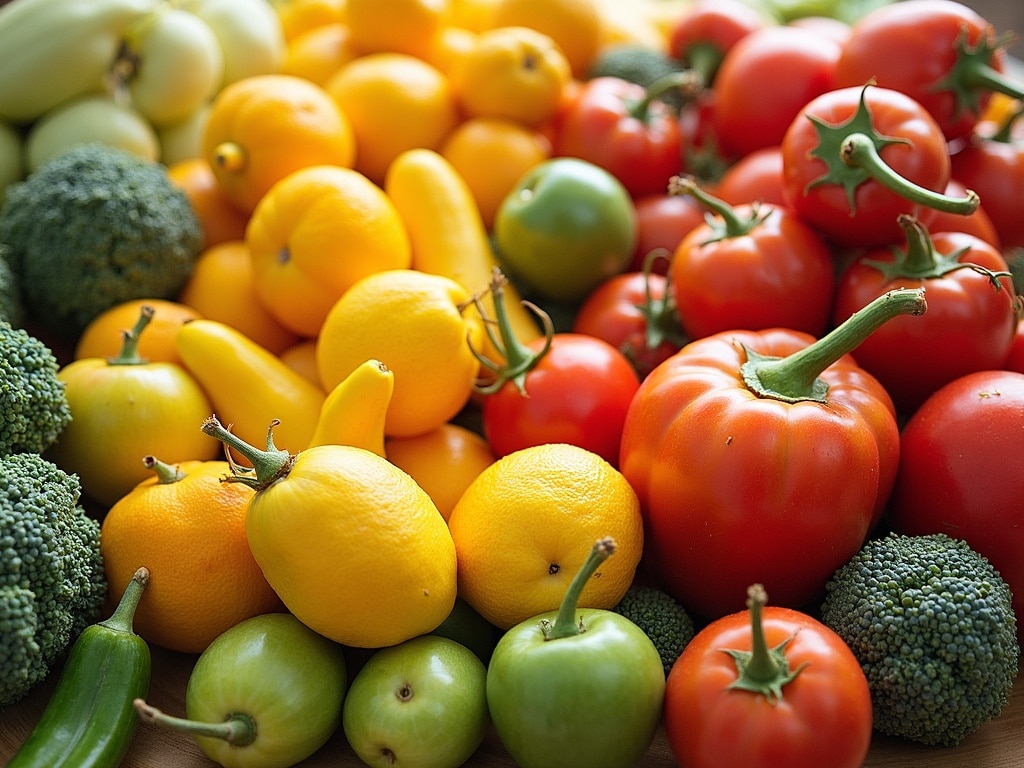The Potassium Powerhouse: Foods That Lower Blood Pressure Naturally
Imagine your blood vessels as a bustling highway, constantly managing the flow of traffic. Now, picture sodium as a reckless driver, speeding and creating congestion, while potassium acts as the calm, collected traffic controller, ensuring a smooth and balanced flow. When sodium levels are too high, and potassium levels are low, that highway becomes a nightmare, leading to high blood pressure. But the good news is, you can regain control and lower your blood pressure naturally by incorporating more potassium-rich foods into your diet. Forget bland diets and restrictive eating – this is about unlocking a delicious and effective way to support your heart health.
Why Potassium Matters for Blood Pressure
Potassium is an essential mineral that plays a critical role in maintaining healthy blood pressure. It works by helping your body get rid of excess sodium. Sodium, primarily from salt, attracts water. This excess water increases blood volume, which in turn raises blood pressure. Potassium helps the kidneys flush out sodium, reducing blood volume and easing the pressure on your arteries. Think of it like this: potassium is the natural counterbalance to sodium, helping to maintain equilibrium in your circulatory system. A deficiency in potassium can lead to high blood pressure, increasing your risk of heart disease, stroke, and kidney problems.
The Science Behind Potassium and Blood Pressure
Numerous studies have demonstrated the link between potassium intake and blood pressure levels. Research consistently shows that individuals who consume diets rich in potassium tend to have lower blood pressure than those who don't. A meta-analysis of several studies published in the Journal of the American College of Cardiology found that increased potassium intake was associated with a significant reduction in systolic and diastolic blood pressure. This effect was particularly pronounced in individuals with existing hypertension. Furthermore, potassium helps to relax blood vessel walls, improving blood flow and further contributing to healthy blood pressure levels. It's not just about counteracting sodium; potassium actively promotes a relaxed and efficient cardiovascular system.
Top Potassium-Rich Foods to Incorporate Into Your Diet
The best way to increase your potassium intake is through whole, unprocessed foods. Here's a list of some of the most potent and delicious sources of potassium, along with tips on how to incorporate them into your daily meals:
- Bananas: The quintessential potassium-rich food. One medium banana contains around 422 mg of potassium. Enjoy them as a quick snack, add them to smoothies, or slice them over your morning cereal.
- Sweet Potatoes: A versatile and nutritious root vegetable. One baked sweet potato with skin provides approximately 542 mg of potassium. Roast them, mash them, or use them in soups and stews.
- Spinach: This leafy green is packed with vitamins, minerals, and, you guessed it, potassium. One cup of cooked spinach contains about 839 mg of potassium. Add it to salads, sauté it as a side dish, or blend it into smoothies.
- Avocados: Not just for guacamole! One avocado boasts around 690 mg of potassium. Spread it on toast, add it to salads, or enjoy it as a creamy dip.
- Beans (White Beans, Kidney Beans, Lima Beans): These legumes are excellent sources of potassium and fiber. One cup of cooked white beans, for example, contains about 1,189 mg of potassium. Add them to soups, stews, salads, or enjoy them as a side dish.
- Beet Greens: Often overlooked, beet greens are a nutritional powerhouse. One cup of cooked beet greens contains a whopping 1,309 mg of potassium. Sauté them with garlic and olive oil for a simple and delicious side dish.
- Dried Apricots: A sweet and convenient way to boost your potassium intake. A half-cup of dried apricots provides about 756 mg of potassium. Enjoy them as a snack or add them to trail mix.
- Coconut Water: A refreshing and hydrating beverage that is also rich in potassium. One cup of coconut water contains around 600 mg of potassium. Enjoy it on its own or use it as a base for smoothies.
- Potatoes (with skin): While often unfairly demonized, potatoes (especially with the skin on) are a good source of potassium. One medium baked potato with skin contains about 926 mg of potassium.
- Tomatoes and Tomato Products: Whether fresh, canned, or in sauce form, tomatoes are a decent potassium source. One cup of tomato sauce contains around 728 mg of potassium.
Delicious and Easy Ways to Increase Your Potassium Intake
It's easier than you think to incorporate more potassium into your diet. Here are some practical tips and recipe ideas:
- Start your day with a potassium-rich smoothie: Blend a banana, spinach, a handful of berries, and coconut water for a nutritious and delicious breakfast.
- Snack on fruits and vegetables: Keep bananas, avocados, and baby carrots readily available for quick and healthy snacks.
- Swap out salty snacks: Instead of chips or pretzels, opt for a handful of dried apricots or a small bowl of white beans.
- Roast vegetables for dinner: Roast a medley of sweet potatoes, Brussels sprouts, and bell peppers for a flavorful and potassium-packed side dish.
- Add beans to your soups and salads: Beans are a great way to boost the potassium and fiber content of your meals.
- Use tomato sauce as a base for your meals: Tomato sauce is a versatile and convenient way to add potassium to your diet .

Beyond Food: Other Lifestyle Changes to Lower Blood Pressure
While incorporating potassium-rich foods is a crucial step, it's not the only factor in managing blood pressure. Adopting a holistic approach that includes other lifestyle changes can significantly enhance your efforts:
- Reduce Sodium Intake: This is perhaps the most crucial step alongside increasing potassium. Read food labels carefully and be mindful of hidden sources of sodium in processed foods, sauces, and condiments. Aim for less than 2,300 milligrams of sodium per day, and ideally, closer to 1,500 milligrams.
- Maintain a Healthy Weight: Being overweight or obese increases your risk of high blood pressure. Losing even a small amount of weight can make a significant difference.
- Exercise Regularly: Aim for at least 30 minutes of moderate-intensity exercise most days of the week. Activities like brisk walking, jogging, swimming, and cycling are all excellent choices.
- Limit Alcohol Consumption: Excessive alcohol consumption can raise blood pressure. If you drink alcohol, do so in moderation (up to one drink per day for women and up to two drinks per day for men).
- Manage Stress: Chronic stress can contribute to high blood pressure. Practice relaxation techniques such as yoga, meditation, or deep breathing exercises.
- Quit Smoking: Smoking damages blood vessels and increases your risk of high blood pressure. Quitting smoking is one of the best things you can do for your overall health.
The DASH Diet: A Blood Pressure-Lowering Powerhouse
The Dietary Approaches to Stop Hypertension (DASH) diet is specifically designed to lower blood pressure. It emphasizes fruits, vegetables, whole grains, lean protein, and low-fat dairy products while limiting saturated and total fat, cholesterol, and sodium. The DASH diet is naturally rich in potassium, magnesium, and calcium – all nutrients that contribute to healthy blood pressure. It’s not just a diet; it's a sustainable eating pattern that promotes overall well-being.
Who Should Be Cautious About Increasing Potassium Intake?
While increasing potassium intake is generally beneficial for most people, certain individuals should exercise caution and consult with their doctor before making significant changes to their diet. This includes:
- People with Kidney Disease: The kidneys play a crucial role in regulating potassium levels in the body. If your kidneys aren't functioning properly, they may not be able to effectively remove excess potassium, leading to hyperkalemia (high potassium levels), which can be dangerous.
- People Taking Certain Medications: Some medications, such as ACE inhibitors, ARBs, and potassium-sparing diuretics, can increase potassium levels in the body. Combining these medications with a high-potassium diet could lead to hyperkalemia.
If you have any underlying health conditions or are taking medications, it's essential to talk to your doctor or a registered dietitian before significantly increasing your potassium intake. They can help you determine the appropriate amount of potassium for your individual needs and ensure that it won't interact with your medications or health conditions.
The Bottom Line: Potassium-Rich Foods for a Healthier Heart
High blood pressure doesn't have to be a life sentence. By embracing a diet rich in potassium-rich foods and adopting healthy lifestyle habits, you can take control of your blood pressure and pave the way for a healthier, happier future. Remember, it's about making sustainable changes that fit your individual needs and preferences. So, load up on those bananas, sweet potatoes, and spinach, and start your journey towards a heart-healthy life today. Little by little, bite by bite, you can make a profound difference in your cardiovascular well-being.

